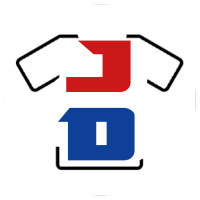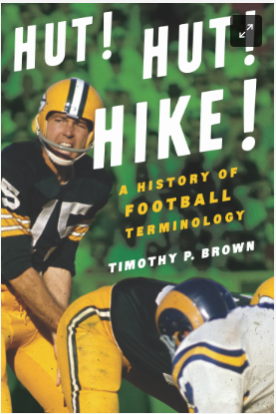The game of baseball has a long and storied history of its players, teams and managers. The stats, the championships, pitching duels and so much more make this one of the most interesting items to study and watch.
Sports History
Ken Caminiti A Baseball Talent
Caminiti's path to stardom wasn't linear. Drafted by the Houston Astros in 1987, he bounced around the league for several years before finding his footing with the San Diego Padres in 1992. Here, his natural talent blossomed. He honed his defensive skills and developed a powerful swing, culminating in a breakout 1996 season.
That year, at the age of 31, Caminiti seemingly defied the aging curve. He openly admitted to using steroids to recover from a shoulder injury, and the results were undeniable. His home run total jumped from 26 the previous season to an astounding 40. He also led the league in batting average (.326) and RBIs (130), a feat that earned him the National League Most Valuable Player Award.
Caminiti's MVP season was a revelation, showcasing his immense potential. He became a fan favorite, leading the Padres to the playoffs for the first time in franchise history. However, the shadow of steroids loomed large. His sudden surge in power fueled speculation, and his career trajectory never fully recovered.
While he remained a valuable player for a few more seasons, injuries plagued him, and his production declined. The stigma surrounding his steroid use tarnished his image. In 2002, he tragically passed away at 41, leaving behind a legacy of "what if."
Ken Caminiti's story is a complex one. He was a gifted athlete who achieved greatness, albeit with an asterisk attached. His career serves as a reminder of the dark side of performance-enhancing drugs and the pressure athletes face to push the boundaries. While his accomplishments deserve recognition, the controversy surrounding his use of steroids casts a long shadow.
Frank Chance World Series Champ and HOF Player
Born September 9, 1877, in Salida, California, was Baseball Hall of Fame First Baseman, Frank Chance. This legend was a World Series Champion in 1907, 08 with the Chicago Cubs. Chance was the National League stolen base leader and the NL runs leader 1906.
Frank started playing ball for the Cubs organization when they were called the Chicago Orphans in 1898 and played right through the 1903 season when the Cubs moniker was adopted. Chance also served as a manager of the Chicago Cubs, NY Yankees, and Boston Red Sox after his playing career.
Max Carey Pittsburgh Pirates Hustling HOF Outfielder
-Speed Demon: Carey's defining stat was stolen bases. He swiped a breathtaking 738 of them, a National League record that stood for nearly four decades. He terrorized pitchers with his daring attempts, a blur of legs and dirt churning towards home.
-Hits galore: But Carey wasn't just a speedster; he hit too. He averaged over .280 for his career and amassed nearly 2,665 hits, proving his talent extended beyond the basepaths.
-World Series star: In 1925, Carey's brilliance helped the Pittsburgh Pirates clinch the World Series. He batted a scorching .458, smashing three doubles and silencing all doubters who questioned his clutch gene.
A touch of darkness: Carey's career wasn't without shadows. He battled injuries, clashed with management, and even spent time on a team implicated in Mafia ties. But his on-field talent and impact on the game remain undeniable.
Max Carey's legacy, like his stolen bases, remains fast-paced and vibrant. He wasn't just a statistic; he was a spark plug, a showman, and a reminder that talent and audacity can leave a lasting mark on the diamond.
Andy Pafko Baseball Legend
Pafko's career highlights include:
Four-time All-Star (achievement not as common then as it is today)
A lifetime batting average of .285 with 213 home runs and 976 RBIs
Playing in four World Series with three different teams (Chicago Cubs in 1945, Brooklyn Dodgers in 1951, and Milwaukee Braves in 1957 and 1958)
Being named to the Chicago Cubs All-Century Team in 1999
While Pafko never won a World Series championship, he was a key part of some great teams and is fondly remembered by Chicago Cubs fans.
Andrew Pafko (February 25, 1921 – October 8, 2013) was an American professional baseball player. He played in Major League Baseball (MLB) for the Chicago Cubs (1943–51), Brooklyn Dodgers (1951–52), and Milwaukee Braves (1953–59).
George Kell Baseball Hall of Fame
Kell's journey began with the Philadelphia Athletics in 1943. Though his early years were overshadowed by World War II, his talent was undeniable. He possessed a smooth swing, a keen eye at the plate, and an uncanny ability to make consistent contact. This translated into a staggering nine seasons where he batted over .300, including a league-leading .343 in 1949, narrowly edging out the legendary Ted Williams.
While not a power hitter, Kell was a nightmare for opposing pitchers. He averaged a mere 26 strikeouts per season, showcasing his exceptional plate discipline and ability to put the bat on the ball. He won the hearts of fans with his hustle and grit, diving for every grounder and never giving up on a play. His quiet leadership and positive attitude were invaluable assets to the teams he played for.
Kell's greatest success came with the Detroit Tigers, where he became a fan favorite and a fixture at third base for seven seasons. He was a key member of their potent lineup in the early 1950s, playing alongside the likes of Al Kaline and Harvey Kuenn. While the Tigers never reached the World Series during his tenure, Kell's consistency and leadership were instrumental in their success.
Following his playing career, Kell transitioned seamlessly into broadcasting, becoming a beloved voice for the Detroit Tigers for an incredible 37 years. His folksy charm and insightful commentary endeared him to a new generation of fans.
The life and career biography sketch of former MLB star George Kell. Kell was an MLB third baseman from Arkansas State who played 15 seasons for the Philadelphia Athletics (1943–1946), Detroit Tigers (1947–1952), Boston Red Sox (1952–1954), Chicago White Sox (1954–1956), and Baltimore Orioles (1956–57). He is one of the top MLB players that wore the Jersey Number 7.
Augie Galan Baseball Hall of Fame
Galan, born in 1910, entered the professional ranks in 1931. Notably, he was a switch-hitter, a rarity at the time, adding an extra layer of versatility to his skillset. His early years were spent bouncing between minor league teams, showcasing his potential but struggling to find a permanent home. Finally, in 1934, the Chicago Cubs saw his talent and called him up to the big leagues.
Galan's arrival in Chicago coincided with the rise of the Cubs' powerhouse lineup. Though not a superstar himself, he became a reliable contributor, batting a consistent .280 or higher in his first three seasons with the team. His ability to hit from both sides of the plate proved valuable, allowing him to adapt to different pitching matchups.
In 1937, Galan was traded to the Brooklyn Dodgers, embarking on the first of several trades throughout his career. While his batting average dipped slightly during his time with the Dodgers, he remained a steady presence in the lineup, playing a key role in their 1941 World Series run. He even had a memorable moment in the Fall Classic, hitting a home run against the Yankees' legendary pitcher Red Ruffing.
Galan's career continued with stints on the Cincinnati Reds, New York Giants, and Philadelphia Athletics. Though his prime years were arguably with the Cubs and Dodgers, he continued to be a valuable option for these teams, often batting around .270 and providing solid defense at first, third, and left field.
One interesting aspect of Galan's career is his shifting stance as a switch-hitter. While he initially batted from both sides of the plate, records show him primarily hitting right-handed in 1941 before returning to switch-hitting for a few years. In the latter half of his career, he transitioned to batting exclusively left-handed. This adaptation throughout his years demonstrates his dedication to staying relevant and adjusting his approach to the game.
By the time Augie Galan hung up his cleats in 1949, he had compiled a solid .287 career batting average, played in three World Series (winning one), and earned three All-Star selections.
May 23, 1912, in Berkeley, California, was August John Galan. He was a professional baseball outfielder, manager, and coach.
He played 16 seasons in Major League Baseball from 1934 to 1949 for the Chicago Cubs, Brooklyn Dodgers, Cincinnati Reds, New York Giants and Philadelphia Athletics.
Lefty Gomez Baseball Hall of Fame Pitcher
Born in California in 1908, Gomez's journey began on the West Coast before landing him in the heart of baseball's biggest stage – Yankee Stadium. Debuting in 1930, Gomez quickly established himself as a force to be reckoned with. His fastball, described as "lighting in a bottle," baffled hitters, propelling him to become a dominant starter.
But Gomez wasn't just about raw talent. He possessed a fierce competitive spirit and a knack for rising to the occasion. He led the American League in wins twice, ERA twice, and strikeouts a staggering three times. His dominance culminated in a pair of pitching Triple Crowns – a rare feat where a pitcher leads the league in wins, ERA, and strikeouts – in 1934 and 1937.
While his statistics are impressive, Gomez's legacy goes beyond the numbers. He was a five-time World Series champion with the Yankees, a testament to his clutch pitching in the biggest games. His perfect 6-0 record in World Series starts remains a testament to his composure under pressure.
Yet, it's Gomez's personality that truly sets him apart. He was known for his quick wit and playful barbs directed at teammates and opponents alike. His famous line, "You're damn right I would [throw at my own grandmother]. She's a good hitter!" perfectly encapsulates his sense of humor and competitive fire.
Gomez's career, however, wasn't without its challenges. A shoulder injury in 1940 threatened his dominance, and his final years saw him bounce between teams before retiring in 1943. Despite the late hurdles, Lefty Gomez left an undeniable mark on the game.
Born November 26, 1908, in Rodeo, California, was Baseball Hall of Fame Pitcher, Lefty Gomez. Of course as his nickname implies Gomez was a left-handed pitcher, who played in Major League Baseball between 1930 and 1943 for the New York Yankees and the Washington Senators.
Lefty was selected as an All-Star every year between 1933 and 1939. Gomez is one of the top MLB players to have worn Jersey Number 11. MLB Number 11 Jersey
Steve Garvey Baseball Version of Popeye
Steve Garvey played the position of Hall of Fame, First Baseman, Third Baseman/H, Left Fielder, Shortstop, Right Fielder, and Second Baseman wearing the number 6 on the Los Angeles Dodgers (1969-82) San Diego Padres (1983,-87) for 19 seasons as he batted 0.294 for his career, had an On Base percentage of 0.446, with 272 career Home Runs, and 4 Gold Glove Awarded Seasons. Garvey is one of the top MLB jersey Number 6s of All-Time. This is Steve Garvey's Official Website.
Baseball at the Abyss - The Scandals of 1926, Babe Ruth, and the Unlikely Savior Who Rescued a Tarnished Game
A book by author Dan Taylor - Baseball at the Abyss:The Scandals of 1926, Babe Ruth, and the Unlikely Savior Who Rescued a Tarnished Game
The story centers around the alleged scandal of MLB legends Ty Cobb and Tris Speaker, who were accused of fixing and betting on games and the scandal surrounding them and baseball. They were acquitted by the voice of an unlikely person, — Christy Walsh, the 1st modern sports agent and business manager for Babe Ruth.
Jimmy Rollins Baseball Superstar Shortstop
Rollins' career began in the shadow of veterans. Drafted by the Phillies in 1996, he spent years honing his skills in the minor leagues before finally making his big league debut in 2000. Early on, his speed and defense stood out. He became the Phillies' starting shortstop in 2001, quickly establishing himself as a defensive force with smooth fielding and a strong arm.
But Rollins was more than just a glove. He blossomed into a dynamic offensive threat. In 2001, he took over the leadoff role, sparking the Phillies' lineup with his ability to get on base and create havoc on the basepaths. He led the National League in stolen bases in 2001, showcasing his electrifying speed.
Rollins' offensive prowess continued to develop. He became a consistent hitter, capable of spraying line drives to all fields. 2007 proved to be his pinnacle year. He captured the National League Most Valuable Player award, leading the Phillies to their first division title in 14 years. His electrifying play on both sides of the ball made him a true force on the field.
The following year, in 2008, Rollins etched his name even deeper in Phillies lore. He played a pivotal role in the team's World Series championship run. His postseason heroics, including two leadoff home runs, were instrumental in the Phillies' victory.
The life and career bio of Jimmy Rollins. Born November 27, 1978, in Oakland, California, was Baseball legend Jimmy Rollins.
Rollins played Shortstop and a bit of Second Base wearing the number 11 on the Philadelphia Phillies (2001-14) and the Los Angeles Dodgers (2015) for 14 seasons as he batted 0.264 for his career, had an On Base percentage of 0.418, with 231 career Home Runs, and 4 Gold Glove Awarded Seasons. Jimmy Rollins is one of the top MLB players to have worn Jersey Number 11.
February 7 Jersey Numbers

Here are some jersey numbers in team sport history that stuck out. February 7, 1949 - Number 5, Joe DiMaggio became the first ball player to earn $100,000 a yearas he did so under contract with the New York Yankees . February 7, 1958 - The Brooklyn Dodgers official...
- The use of a "banner" counts as 10 words!
February 6 Jersey Numbers
Sports history is made every day of the year. We will preserve at least a small sampling from some great athletes every day based on the uniform number they wore. 31 - 9 - 14 - 83 - 7 - 16 - 22 - 80 - 11 - 84 - 10 - 83 - 12 February 6, 1926 - St Louis Browns acquire catcher Wally Schang from ...
February 5 Jersey Numbers

Here is what happened in Sports Jersey History on February 5: Kareem hits a new NBA high, Hines hauls in a big one and Bob Douglas is honored. Our Sports Jersey Take of the Day is from historian Joe Ziemba. Listen in to learn more about sports history along with me from the unif...
- The use of a "banner" counts as 10 words!
The Oregon Agricultural Hard Court Stars
(image) Members of the 1922 Oregon Agricultural College men's basketball team. From left to rightː Gill (forward), Hjeite (enter), and Feraley (forward), from February 5, 1922. This image is courtesy of Wikimedia Commons. We know the OAC by a different name today, Oregon State. The Oregon Ag...
The 1897 Strathcona Hockey Team
.jpg?https://jerseydispatch.com/pfeL/p/c312642c0431e75b485e432232c99c1c/website/Sports-History-Photo-of-the-Day/February-Images/February-4-Image/images/.Strathconas_First_Hockey_Team_(21879505322).jpg)
Formal portrait of Strathcona's First Hockey Team (1897). Stratchcona resides in British Columbian Province, and is the oldest residential neighbourhood of Vancouver, (image) Some players are labeled by number. 1. Bob Blain 2. Jim Blain 3. Billy Sharkles 4. Fred Richards 5. J. McIn...
- The use of a "banner" counts as 10 words!
February 4 Jersey Numbers

Here is what happened in Sports Jersey History on February 4 : We talk about the great goaltending of Grant Fuhr and Ray Durbin of Row One Brand stops by to to discuss two of his favorite number 40s. Listen in to learn more about sports history along with me from the uniforms and jers...
- The use of a "banner" counts as 10 words!






